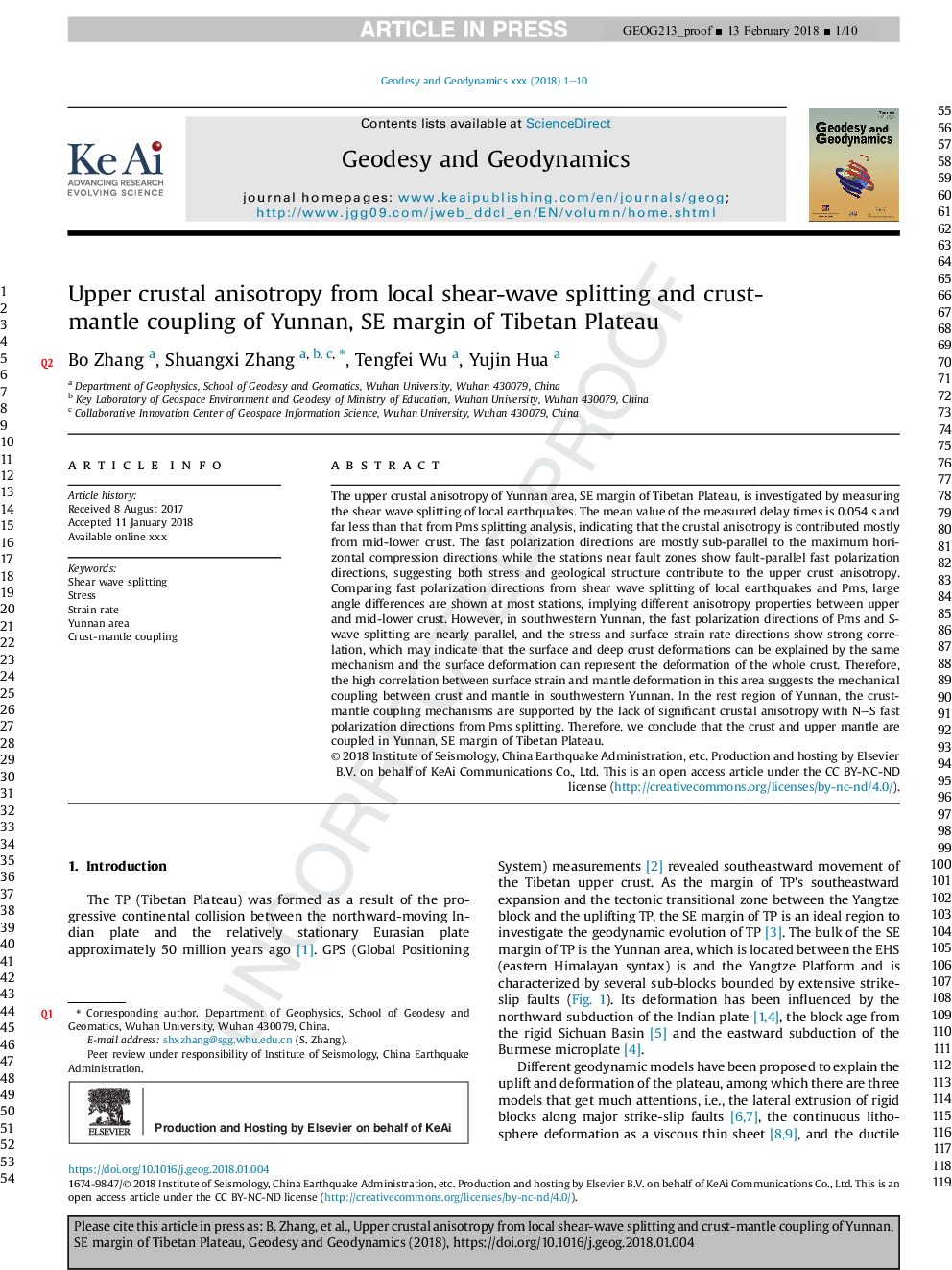| Article ID | Journal | Published Year | Pages | File Type |
|---|---|---|---|---|
| 8907840 | Geodesy and Geodynamics | 2018 | 10 Pages |
Abstract
The upper crustal anisotropy of Yunnan area, SE margin of Tibetan Plateau, is investigated by measuring the shear wave splitting of local earthquakes. The mean value of the measured delay times is 0.054Â s and far less than that from Pms splitting analysis, indicating that the crustal anisotropy is contributed mostly from mid-lower crust. The fast polarization directions are mostly sub-parallel to the maximum horizontal compression directions while the stations near fault zones show fault-parallel fast polarization directions, suggesting both stress and geological structure contribute to the upper crust anisotropy. Comparing fast polarization directions from shear wave splitting of local earthquakes and Pms, large angle differences are shown at most stations, implying different anisotropy properties between upper and mid-lower crust. However, in southwestern Yunnan, the fast polarization directions of Pms and S-wave splitting are nearly parallel, and the stress and surface strain rate directions show strong correlation, which may indicate that the surface and deep crust deformations can be explained by the same mechanism and the surface deformation can represent the deformation of the whole crust. Therefore, the high correlation between surface strain and mantle deformation in this area suggests the mechanical coupling between crust and mantle in southwestern Yunnan. In the rest region of Yunnan, the crust-mantle coupling mechanisms are supported by the lack of significant crustal anisotropy with NS fast polarization directions from Pms splitting. Therefore, we conclude that the crust and upper mantle are coupled in Yunnan, SE margin of Tibetan Plateau.
Related Topics
Physical Sciences and Engineering
Earth and Planetary Sciences
Earth-Surface Processes
Authors
Bo Zhang, Shuangxi Zhang, Tengfei Wu, Yujin Hua,
